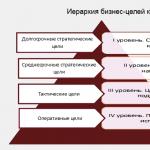Transport, logistics programs for accounting automation in transport, logistics and forwarding companies. Transportation management 1c forwarding services
The system "1C:Enterprise 8. TMS Logistics. Transportation Management" (1C:TMS) comprehensively automates the processes of managing cargo transportation. Focused on organizations engaged in multimodal transportation, delivery within the city and between regions.
1C solutions for freight forwarding companies allow you to optimize route planning, speed up cargo delivery, reduce the time for processing transportation documents, prevent the possibility of inappropriate use of transport, and optimize costs for providing flights.
Automation of transportation and supply chain management
The TMS (Transportation Management Systems) system organizes coordinated and efficient interaction of all participants in the transport logistics management process:
- ensures technical consistency of parameters of different modes of transport in a single transportation chain;
- unifies the technology of cargo transportation, taking into account the specifics of all types of transport involved in the transportation of cargo;
- allows you to build a unified tariff management system throughout the entire supply chain.
1C TMS automates the following tasks of transport logistics and transportation management:
- · building a supply chain that involves various modes of transport - railway, aviation, ocean, sea; motor transport;
- supply chain planning by several departments of the company;
- selection of a cargo transportation contractor for each link in the supply chain;
- choice of type of transportation: groupage (as part of a groupage cargo) or delivery by separate transport
- satellite monitoring of vehicle operation, cargo transportation safety control.
1C TMS functionality for automation of transportation management
Workplaces in the TMS system for automating transportation and logistics management
Depending on the structure of the company, workplaces can be configured in the 1C TMS Logistics Transportation Management 8 program for all employees involved in transportation and logistics management:
- logistics department specialist;
- dispatch service specialist;
- head of the transport department;
- sales manager;
- purchasing manager
TMS subsystems
The TMS system includes subsystems that provide solutions to the following tasks:
- management of regulatory and reference information;
- management of cargo transportation needs;
- management of cargo transportation tasks;
- formation of flights and transportation routes;
- resource management to support flights;
- monitoring the implementation of transport tasks;
- tariff policy management;
- management of employee interactions when solving transport and logistics problems;
- managing employee access to the system;
- generation of analytical reports;
- online monitoring of cargo movement.
All subsystems of “1C Enterprise 8 TMS Logistics. Transportation Management” are interconnected and interact with each other. Together, they provide solutions to all the key tasks of a transport and logistics company or corporate fleet.
TMS subsystems for automation of transportation management
Management of normative and reference information
The subsystem manages information about objects of directories, classifiers, dictionaries, standards, regulations and provisions used in the company. Provides processing and storage of information, allows you to maintain the relevance and uniformity of the following data necessary for operational logistics management:
- nomenclature;
- own organizations;
- contact persons and addresses;
- counterparties (agents, contractors, customers, etc.);
- tariff rules taking into account various parameters of cargo transportation;
- tariff groups;
- currencies and exchange rates;
- cargo classification rules;
- routes;
- system users.
All data is stored in directories of the 1C Enterprise 8 TMS Logistics Transportation Management system.
Managing your freight needs
The subsystem is designed to assess the needs for cargo transportation and control further actions to meet these needs.
The subsystem performs the following functions:
- · registration of transportation needs;
- · control of further processing of the requirement;
- · registration of all actions related to the processing of requirements.
Management of cargo transportation tasks
The subsystem solves the problems of transportation management in 1C:TMS: it allows you to register and control the execution of tasks for the transportation of goods.
Using the subsystem, the user can:
- register all types of cargo transportation tasks - intracity, intercity, interregional, multimodal;
- calculate the planned cost of transportation;
- control the stages of task completion;
- record all actions related to the processing of each task.
Flight formation
The subsystem is designed to form and control the execution of flights. Allows you to create both complete and consolidated flights, including parts of several different cargo transportation tasks into one flight.
Solves the following tasks:
- planning costs for providing flights;
- flight control;
- preparation of transportation documents and printing them.
Managing resources to support flights
The subsystem is designed to manage the selection and assignment of employees and vehicles to complete transportation tasks. This ensures efficient management of transportation processes, taking into account the actual volume of tasks and available resources.
The subsystem allows:
- control the needs for material and technical means required to ensure planned transportation;
- analyze applications for the provision of transport;
- process applications: authorize the allocation of personnel and transport to support the flight or reject the application;
- electronically coordinate requests for vehicles;
- control the execution of flights;
- record the passage of waypoints.
Management of the Company's tariff policy
The subsystem automates pricing management and control of cargo transportation profitability.
Solves the following tasks:
- fixation of principles and methods for determining transportation tariffs;
- fixation of rules for calculating costs for flights;
- recording calculation indicators that are associated with one or two parameters;
- rationing of costs for the provision of services.
Interaction Management
The subsystem is designed to manage communications. Allows you to plan, register, coordinate interaction between employees performing a particular task.
The functionality of the subsystem gives users the opportunity to:
- plan interaction (determine the composition of interaction participants, the information each of them needs to solve the problem, how and when this information will be provided to them);
- distribute information between interaction participants;
- generate reports on the execution of current tasks of interaction participants;
- register the completion of the process (recording and disseminating information about the completion of a stage of work or a task as a whole).
Access Control
The subsystem manages employee access rights to configuration data “1C Enterprise 8 TMS Logistics. Transportation Management”.
Employee access to system objects is configured in accordance with assigned roles, which can be determined based on:
- user position;
- type of user activity;
- local user functions.
Each role has its own set of objects available for viewing and actions on these objects. An employee can be assigned one or several roles. A list of all infobase users and the roles assigned to them is stored in the “Users” directory. It is possible to configure access rights (assigning roles, editing directory elements).
Receiving analytical reports
The subsystem allows you to generate detailed reports on various criteria of activities related to the management of cargo transportation.
Report forms can be customized according to the needs and wishes of employees.
Satellite GPS/GLONASS monitoring and visualization of information on electronic maps
The subsystem allows online monitoring of transport operation, cargo movement, stages of transport tasks, various indicators of equipment performance - location, direction, speed, stops, fuel level, etc.
Allows the user to visualize and track the following indicators on electronic maps:
- geographical addresses;
- geographical zones;
- vehicle routes;
- speed of transport;
- geographic coordinates of the cargo location;
- temperature of the cargo compartment where the cargo is located;
- negative external influences on the cargo (impacts, shocks, falls).
In addition, using the subsystem, you can calculate the distance along a given route and generate reports on the movement of cargo.
When automating transportation processes, one of the main tasks is to reduce transportation execution time and its cost. Module " Transportation management" - an integral part of the AXELOT TMS X4 system developed on the 1C:Enterprise platform - is designed to automate transportation planning operations, generate delivery routes, and monitor their execution.
The module can also be used as an independent automated system for managing transportation and distribution logistics on the 1C:Enterprise platform. By optimizing the process of route planning and transportation execution using AXELOT TMS X4, it is possible to achieve such effects as reducing the required number of vehicles and mileage, reducing fuel costs, and improving the quality and level of service provided during the delivery process.
Module " Transportation management» provides the following functionality:
Application management
A request for cargo transportation is created based on the client’s request to transport cargo from the starting point to the final point.

The card is also used for geocoding addresses- linking an address to a specific point on the map. Geocoding can be done automatically or manually. Manual geocoding mode is used if the address in the application is specified incorrectly or incompletely, or such an address simply does not exist and it must be forcibly marked on the map.

With automatic planning, the system allows you to select the most optimal vehicles from the list of your own fleet or the type of vehicles that could potentially be ordered from the carrier. When selecting your own vehicles, their availability schedule is taken into account.

The task of constructing an optimal route and delivery schedule is to optimally distribute all requests for transportation among flights in accordance with agreements with clients, while minimizing the amount of required resources.
When planning flights in AXELOT TMS X4, many parameters are taken into account, for example, such as:
- carrying capacity of the vehicle and the cargo being transported;
- road map, including traffic statistics;
- compatibility of transported products;
- the driver’s work schedule in compliance with the work and rest schedule;
- length and execution time of the route and many others.
When automatically scheduling in AXELOT TMS X4, many restrictions are also taken into account, for example, such as:
- taking into account delivery time windows and partners’ work schedules;
- delivery taking into account the detour of several loading warehouses;
- driver work schedules and planning multiple trips for one shift;
- taking into account restrictions on the number of cargoes;
- taking into account restrictions on the accessibility of entry into transport zones;
- accounting for the collection and return of containers and other returnable goods;
- taking into account the possibility of delivering goods for each vehicle and driver;
- accounting of work time at distribution points according to delivery statistics and cargo unloading time;
- percentage of route distribution by carrier.
AXELOT TMS X4 allows the logistician not to analyze these restrictions manually, but to produce the result of automatic planning to control the execution of the route.
The planning result is visually available to the user, indicating the timing of the flight and the length of its route.

The functionality of AXELOT TMS X4 allows you to make changes to the flight at the stage of its execution, for example, if it is necessary to add an additional route point.
You can also see the loading of the vehicle over time during the flight. This can be useful in case of reloading the vehicle at one of the points.

To control the execution of flights, the system provides a set of statuses that change dynamically depending on the current state.

Conducting tenders for transportation and selecting carriers
With AXELOT TMS X4 you can manage transportation carried out not only by your own forces, but also by third-party carriers. In all planning processes described above, vehicles provided by a third party carrier may be selected.
If the carrier is not known in advance, then there is the possibility of holding tenders.
The tender consists of the following stages:
- generating applications for the allocation of vehicles to carriers;
- receiving commercial offers from carriers;
- selection of the winner.
The application for the allocation of a vehicle specifies all the parameters necessary to select a specific vehicle for the flight.

Applications for the allocation of a vehicle can be generated in a group manner with automatic distribution to the specified carrier companies by email.
Commercial proposals can be entered by carriers independently on a special tender portal.
The dispatcher can select the most advantageous offer, and a corresponding notification is sent to the email address of the winning bidder. Losing carriers also receive notification of the tender results via email.

Document delivery control
Monitoring the completeness of documents when returning from a flight allows you to improve the quality of the company’s document flow.
The functionality of AXELOT TMS X4 allows you to keep a simplified record of returned documents - control the total quantity or record in detail each returned copy, indicating its quality.

Upon the return of documents, AXELOT TMS X4 configures the need to pay bills to third-party carriers, as well as the need to pay a premium component for its drivers. This functionality allows you to improve not only the quality of document flow, but also provides the opportunity to pay only for those shipments for which the entire set of closing documents is available.
Tariffication of transportation
A flexible mechanism for setting tariffs allows you to define different tariff schedules. In the module " Transportation management» when entering a request for transportation, the composition and cost of transportation services and the cost of additional services provided to the client as part of this transportation can be determined.

Calculation of the cost of services can be based on many indicators: weight and dimensions of the cargo, distance from the starting point to the final point, transportation time, transportation modes, etc. Arbitrary formulas based on these indicators and table functions for ranges of indicator values can also be specified.

Control of mutual settlements with customers and carriers
In AXELOT TMS X4 it is possible to keep records of mutual settlements with transportation customers and carriers. The functionality allows you to calculate not only planned indicators for possible income and expenses, but also to calculate services based on actual transportation data.
The system allows you to take into account the principle of payment of invoices for transportation requests (prepayment, postpayment), as well as control the payment terms and the maximum limit of receivables at the level of each contract.

To manage the process of mutual settlements, the system provides a separate workplace “Management of settlements with customers”, in which it is possible to generate invoices for services provided in the context of transportation requests, control the payment of invoices, and also reconcile the services provided by the contractor in the context of each transportation for a given period.
Costing and analytical reporting
The automated transport management system maintains planned and actual costs. It is possible to take into account all types of costs, distributing them to specific flights, transportation requests, or in proportion to various parameters (weight, volume, distance, etc.), and combinations of these parameters are also possible (for example, distribution by ton-kilometers). Only such a cost accounting structure can give a true picture of income and expenses for various types of activities and accounting sections: for each specific client, by type of transportation (for example, regional or intracity), by type of vehicle, by direction, by type of cargo transported and etc.
Planned costs related to a voyage are recorded directly on the voyage. Planned costs are calculated using mechanisms similar to calculating the cost of services for clients and are based on flight parameters. Calculation of planned costs for fuel and lubricants can be carried out using the Waybills mechanism and transferred to the voyage.

Planned costs not related to the voyage are recorded separately.

For each cost item, the method of its distribution among transportation tasks is indicated. This distribution is required to analyze profitability for each task/request for transportation. Costs for a flight can be distributed among applications in proportion to many parameters: time, distance, weight, volume, estimated value of the cargo, as well as any arbitrary formula.

If you use the services of third-party carriers, cost calculation looks quite simple, but if you use your own fleet of vehicles, it is somewhat more complicated. In the second case, it is necessary to take into account not only the direct costs of performing a specific flight (fuels and lubricants, driver’s salary, etc.), but also indirect costs (office rent, depreciation of vehicles, repairs, etc.), which must be subsequently distributed for each application.
In addition to costing based on various criteria, analytical reporting is required for making strategic decisions. To analyze data on costs, planned and actual indicators for flights and other data, the system provides a flexible mechanism for generating analytical reporting, which can be presented in the form of tabular documents, charts and maps. In this case, report settings are performed in user mode. The system implements convenient tools for generating and monitoring key performance indicators (KPIs).
Configuration 1C: “Cargo Transportation 8 PBR” is designed to automate accounting in motor transport companies that have their own transport, as well as those that attract external carriers.
Advantages of the 1C configuration: “Cargo transportation 8 PBR”:
· There is no need to fill out a lot of unnecessary information, the 1C program is easy to use
· Intuitive functionality
· Reduced time for preparing documents in 1C83, which means timely submission of documents
· Streamlining the work of the forwarder and, as a result, improving customer service
· In module 1C: “Cargo transportation 8 PBR” Detailed reports, which allows managers to monitor all stages of the company’s work
· Quick search for applications: by driver, by car, customer, etc.
· Registration of application statuses
· In 1C: “Cargo transportation 8 PBR” there is the ability to design and print waybills
· The cost of the 1C configuration: “Cargo transportation 8 PBR” is several times lower than analogues
· Allows you to download payment documents received from the client bank
· Possible data exchange with 1C: Accounting 8
· Ability to upload and store various files in the database (scanned versions of documents, written applications, etc.).
· Ability to view the cost of delivery of composite cargo
· In 1C: “Cargo transportation 8 PBR” automated accounting of fuels and lubricants
· Ability to view gross profit report
· In 1С83 Report on fuel consumption
Now let’s tell you in detail about the 1C module: “Cargo transportation 8 PBR”.
In the 1C module: “Cargo transportation 8 PBR” based on “1C: Management of a small company 8”, directories “Cars” and “Drivers” were created, containing all the details necessary for work.


The vehicle directory has a vehicle status function; it is automatic; managers immediately see whether a particular vehicle is available, whether it is in service or the vehicle is occupied on another order.

The 1C configuration document Buyer's order, the "Cargo Information" tab reflects the information: vehicle, driver, tonnage, number of pallets, type of packaging, volume, etc. Also, for the convenience of managers, a vehicle selection mechanism has been implemented. The manager enters information about the cargo, such as tonnage, volume, height and width, and is given a list of vehicles that fit these parameters.

The “Route Sheet” tab displays the address and time of loading and unloading, and contacts. Since one customer can have several loading and unloading locations, such route sheets can be added; the mechanism is implemented using a tabular part.

On the “Cargo Transportation Calculation” tab, the manager can record all the contact details of the carrier and mutual settlements with the driver who traveled on this request. The final rate for the driver is calculated automatically.

The tabular section “Additional payment to the driver” shows all additional expenses that the driver incurred during the trip (fines, hotels, lunch, etc.). The tab is designed as a tabular section.

The document flow tab reflects all relationships with the carrier and the customer in terms of document flow. When the customer received the documents, when he made the payment, etc.
 In 1C: “Cargo transportation 8 PBR” there are two external printed forms for the buyer’s order, in one case the company acts as a carrier, in the second case as a customer. The text for the printed forms can be changed in the customer's order.
In 1C: “Cargo transportation 8 PBR” there are two external printed forms for the buyer’s order, in one case the company acts as a carrier, in the second case as a customer. The text for the printed forms can be changed in the customer's order.



In module 1C: “Cargo transportation 8 PBR” a circuit of round trips is implemented, i.e. when the vehicle consists of composite loads, where different customers participate in one shipment of the vehicle.
Created in the 1C module separate document “Waybill”, for the generation of documents for cargo escort, fuel and lubricants consumption. The waybill is created on the basis of the “Buyer’s Order” document, the “Routing Sheet” tab corresponds to the order and is filled in automatically from there.

The “Fuel consumption” tab is designed to account for fuel consumption by a car during a trip, it has the following details: fuel, departure balance, return balance, issued, gas station, quantity filled, amount filled, plastic card, departure speedometer, return speedometer.
 The document “Waybill” has its own printed form, accessible from the document.
The document “Waybill” has its own printed form, accessible from the document.


To account for fuel and lubricants, there is a detailed report on fuel and lubricants. The report contains all the necessary data from the documents “Waybill” and “Buyer’s Order”.



There is a detailed gross profit report for the company management. Which shows all costs for orders, total profit, including profit for flights with composite cargo, etc.


For the company’s logistics department, there is a “Transportation Logistics” report, in which you can track how a particular order is fulfilled. What order has been completed, what is the shipment for, who is the customer, who will go and much more. (Driver, route, cargo, etc.)


The configuration includes an external printed report “Document Flow”, which reflects the documents and necessary information for each order: date of payment by the customer, date of payment to the carrier, form of payment, date of submission of documents, etc.


Module 1C: “Cargo transportation 8 PBR” functions only in conjunction with the 1C configuration: Management of a small company rev. 1.6. The module can only be purchased from our company. 1C Management of a small company can also be purchased from us and the software product can be implemented.
If you have any questions, you can contact us in any way convenient for you.
The St. Petersburg Business Solutions company will be glad to see you among its clients!
Logistics is a process of managing human, information and cost minimization. To increase its efficiency, many enterprises use the software product" 1C: Enterprise 8. TMS Logistics. Transportation management". In the article we will look at its features.
general characteristics
Program "1C: Logistics. Transportation" used to automate flow control. The main goal is to increase the profitability of operations.
Software solution "1C: Enterprise. Transportation" created on the basis of international experience, based on the results of an analysis of the needs of domestic enterprises.
The system allows you to manage the transportation of inventory items from the supplier to the warehouse and to the end consumer.
Who can use the product?
Software solution " 1C: TMS Logistics. Transportation management" is aimed at companies that seek to optimize the process as much as possible.
The product can be used:
- Transport companies carrying out transportation of any vehicles, including mixed schemes. Enterprises can use not only their own fleet, but also use the services of other companies to transport cargo on certain sections of the route.
- Transport and logistics divisions of manufacturing, trading and other companies that deliver goods and materials from suppliers to the warehouse and to the final buyer. Divisions can also use vehicles from their own fleet or from third-party companies.
- Purchasing department in the process of planning and monitoring the delivery of goods by the supplier. System "1C: Enterprise 8.1c. Logistics. Transportation management" allows you to take into account all current and future deliveries and predict the company's trade and production activities.
- The sales department when planning and monitoring the shipment of products from the enterprise’s warehouse, if they are delivered to consumers.
- Divisions of the company responsible for moving goods between warehouses.

Software product objectives
System " 1C 8: Logistics. Transportation management" allows you to solve the most common problems of transport logistics. In particular:
- Ineffective use of vehicle types and models due to the lack of selection algorithms that take into account the maximum use of vehicle characteristics (load capacity, etc.).
- Increased mileage due to the lack of optimal routing schemes.
- Lack/lack of data exchange between enterprise departments involved in transportation.
- Lack of control over the location of the vehicle and the condition of the cargo en route.
- Lack of a reporting scheme to analyze the efficiency and quality of delivery for making management decisions.
Cost minimization
The intensive increase in cargo traffic and the need to improve the quality of service for partners and consumers are forcing enterprises to reconsider the composition of transportation costs.

Automated transportation system" allows:
- Increase the volume of transported cargo without expanding the vehicle fleet.
- Reduce the share of “idle” runs.
- Increase the accuracy and quality of order execution.
- Reduce personnel costs.
- Automatically generate travel and shipping documentation.
- Receive up-to-date information on various performance indicators.
Areas of application
The software product allows:
- Consider the transport and logistics department of the company as a financially responsible center. This, in turn, facilitates making informed decisions related to the involvement of third-party companies in the implementation of certain tasks during the transportation process. In addition, the division gets the opportunity to conduct internal cost accounting and set prices for services provided to other departments of the company.
- Use different types and types of vehicles in your work depending on the stage of delivery (air, courier service, etc.).
- Manage transportation carried out using both own and borrowed funds.
- Carry out cargo registration both in the form of goods (according to specifications) and as impersonal units (places, pallets, boxes, etc.).
- Control all stages of transportation.
"1C: Enterprise 8. transportation": description of delivery

A distinctive feature of the product is its simplicity. The software solution is easily implemented into the work of almost any enterprise, adapting to the specific organizational and technological requirements.
In the product "1C: Logistics. Transportation management"All the advantages of the 1C: Enterprise 8 platform are used: openness, ease of configuration, ease of administration, scalability, etc.
The software solution is compatible with Ingit electronic cards. Due to this, the work of the dispatcher in drawing up a route for a specific vehicle becomes much more convenient.
In product delivery "1C: Logistics. Transportation management"includes:
- A complete set of documents.
- Protection keys (licenses for using the system and configuration for one workstation).
To expand the number of users, an enterprise can purchase an unlimited number of additional licenses. The basic package also includes a six-month subscription to ITS (information and technical support). It can be considered self-instruction manual for "1C: Logistics. Transportation Management."
Functional
Software " 1C: Logistics. Transportation management" provides automation of control:
- Cargo transportation needs. Using the software solution, tasks are registered and monitored for orders from buyers and suppliers, and for invoices (for internal movement).
- Transportation tasks. In particular, accounting and control of order execution is provided.
- Cargo transportation. In an automated mode, routes are formed for the transportation of products specified in various tasks, and the execution of flights is monitored with tracking of vehicles en route.
- Resources. In an automated mode, accounting and control of the satisfaction of applications for the provision of vehicles for the implementation of formed flights is carried out.

In addition, the software product provides:
- Visualization of data on electronic maps.
- Obtaining analytical information for assessing the main parameters of the efficiency of completed orders depending on the type of vehicle, as well as for analyzing accumulated statistical information.
The software solution also allows you to organize functional work areas for purchasing/sales managers, dispatchers, logisticians, and department heads.
Managing cargo transportation needs
These needs can appear based on orders from the buyer, supplier, as well as the planned movement of inventory between the warehouses of the enterprise itself.
Registration is carried out by the manager of the purchasing or sales department or the employee accepting applications. This automates:
- Filling out a request for transportation and indicating the information available at this time. It includes, in particular, information about the nomenclature of the cargo, the recipient, the sender and their addresses, the delivery time interval, and information about contact persons.
- Cancellation of an order before execution begins.
- Execution control: “refused”, “completed”, “executed”.
Job management
As part of this area, the following software is used to automate the design of:
- assignments based on information from the application;
- refusal to execute the application;
- delivery tasks.
In the latter case, registration of the nomenclature composition, volume and weight parameters of the cargo and places, transportation conditions, delivery chain, information about the contractor at each stage is carried out.
In addition, the cancellation of a task before its execution begins is automated.
Control
In the 1C: Logistics. Transportation Management system, tasks for multi- and unimodal transportation, consisting of several links in the chain, are registered. Both the enterprise directly accepting applications and a third-party transport organization can act as the executor of the delivery stage.

The software product allows you to create a workplace for an employee who analyzes transportation requests, creates tasks and develops the optimal delivery chain for each cargo.
Transportation Management Optimization
In automated mode the following is carried out:
- Supervision of arranged flights with the possibility of route cancellation.
- Control of delivery execution with tracking of vehicle movement en route.
- Cancellation of tasks included in the flight.
- Monitoring changes in the condition of cargo (registration of losses, shortages).
- Accounting for actual delivery costs.
Using the 1C: Logistics system, you can create a workplace for an employee who carries out the assembly and routing of flights.
Resource management
Using the program you can:
- Monitoring requests for the allocation of resources for flights and their analysis.
- Confirmation of applications and their execution.
- Registration of refusal to provide a vehicle for flights.
The program's functions allow you to create a work area for the head of a transport department or another employee authorized to distribute vehicles and personnel for specific flights.
Analytical reporting
The program can analyze:
- Fulfilling requests for cargo delivery.
- Execution of transportation tasks along the links of the logistics chains installed in them.
- Satisfying requests for the provision of vehicles.
- Flight operations.
- Delivery related costs.
- Job processing time.
Technological, technical, and qualitative indicators of the efficiency of vehicle use are analyzed in an automated mode. These include the coefficients:
- Use of lifting capacity. It is calculated by dividing the amount of cargo by the carrying capacity of the vehicle.
- Use of volume. It is determined by dividing the volume of cargo per trip by the volume of the vehicle.
- Specific costs for own/hired transport. It is calculated by dividing the total costs by the quantity of cargo delivered.
- Transportation efficiency. It is determined by dividing the amount of cargo transported by the number of machine hours (days).
- Completed tasks. It is calculated by dividing the number of completed tasks by their total number.
- Refusal to provide a vehicle. It is calculated by dividing the number of refusals by the total number of applications.

Visualization of information on electronic maps
This feature helps improve dispatcher routing efficiency. Maps are not included in the software package. At the same time, work with them will be supported if there are licenses purchased from the copyright holders.
The company independently selects the cards it will work with based on its needs.
The transport industry is very diverse in terms of services provided. The activities of carrier enterprises are associated with geographical distribution and a complex system of routing and logistics. In modern conditions of industry development, automation of transport companies is a necessary condition for successful business. This is explained, first of all, by the requirements of market operators, as well as the high level of competition. In addition, logistics has recently become the basis for the efficiency of transport services.
The prompt passage of cargo, building the optimal route, tracking the status of orders, full control of cargo transportation and many other operations simply cannot be tracked without the use of a modern information system. Achieving maximum efficiency and business mobility is possible as a result of automating all activities based on a specialized system.
Vehicle operation accounting
The presence of industry-specific features of various categories of transport companies allows us to identify specific objects for automating vehicle accounting. Typical industry modules of information systems for carriers include:
- transportation management (logistics department);
- Dispatching service;
- maintenance and repair management.
A feature of the business of transport companies is the continuity of the work process. That is why it is so important for department managers to have up-to-date information on order fulfillment. An information system certainly helps with this.
Successful business is possible with the industry solution “”, which solves the problems of logistics, optimal resource planning, providing powerful support for making the right management decisions, which allows the company to reach a new level and compete with dignity.
The industry solution "" is intended for motor transport enterprises doing business in the field of taxi transportation.
The system, created on the basis of the 1C:Enterprise 8 platform, guarantees reliability, industry-specific functionality and scalability, as well as integration with other 1C products - for example, accounting programs or solutions for maintaining personnel records and payroll.





